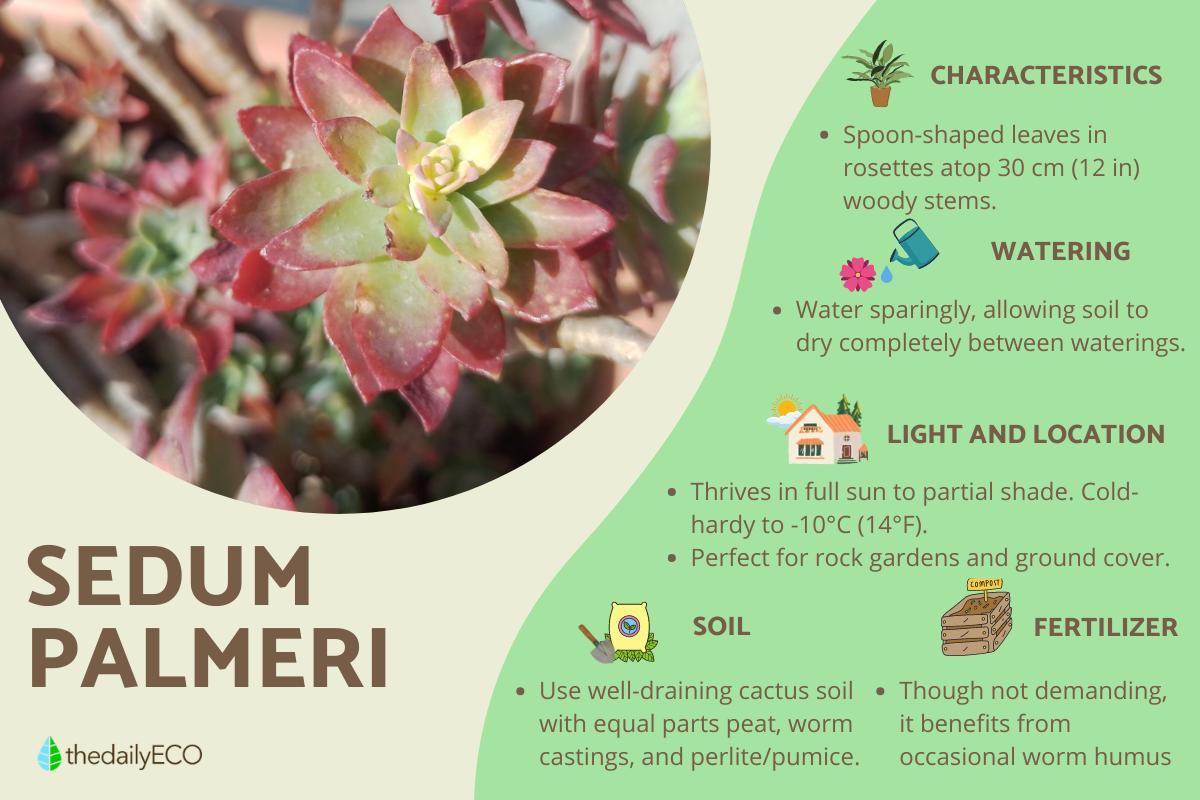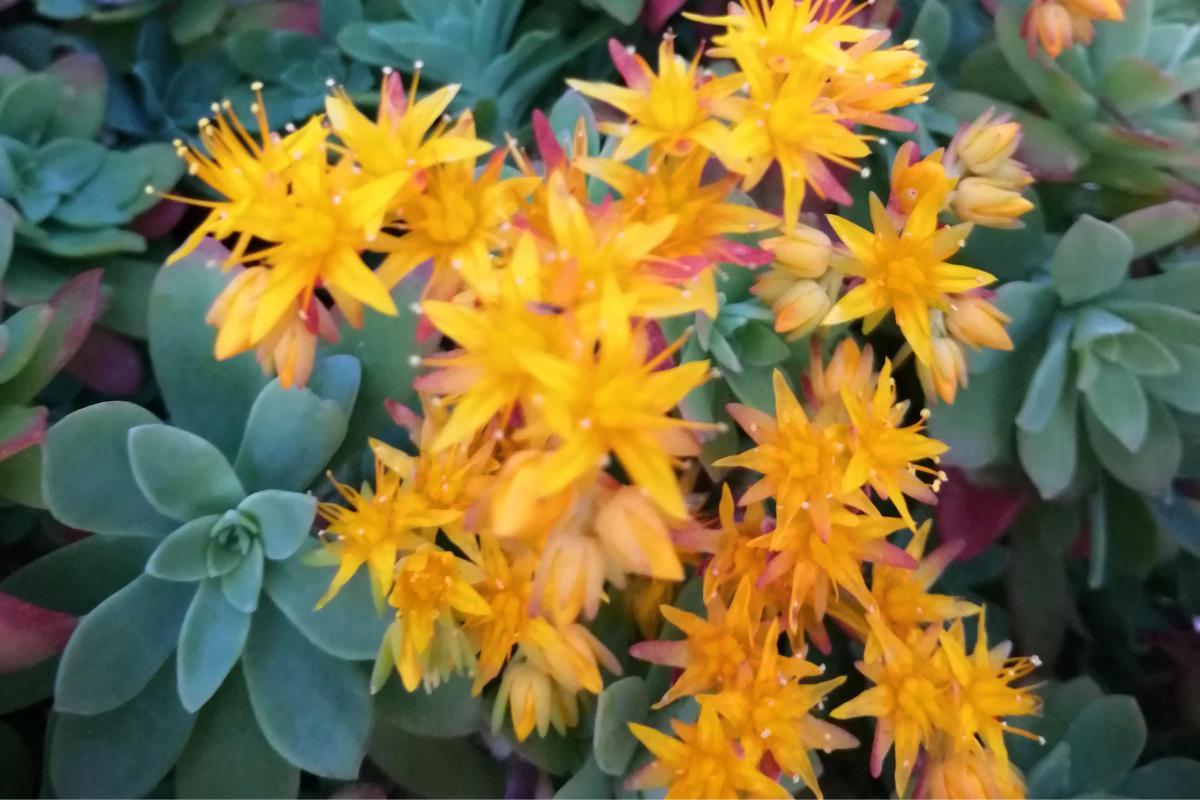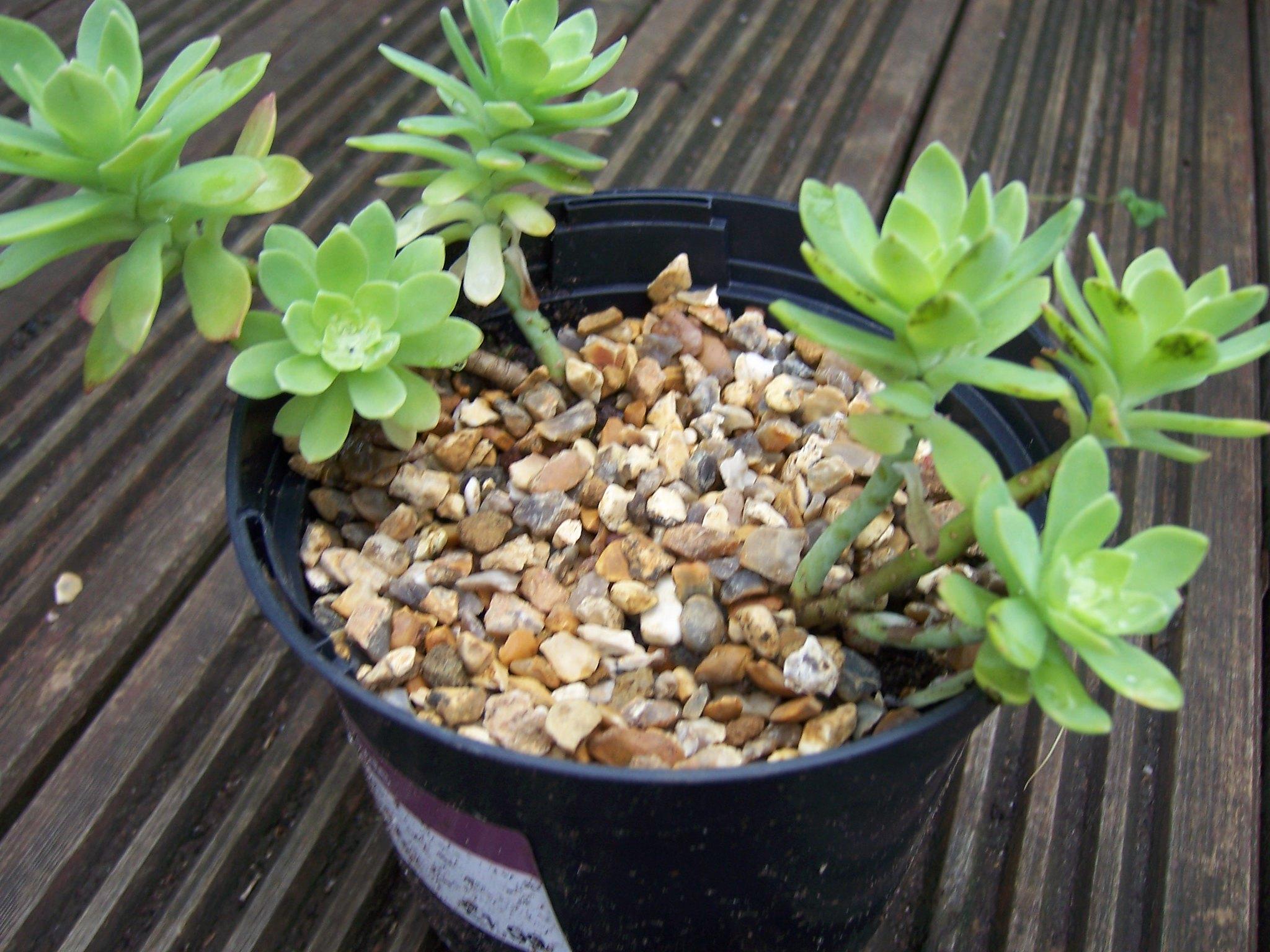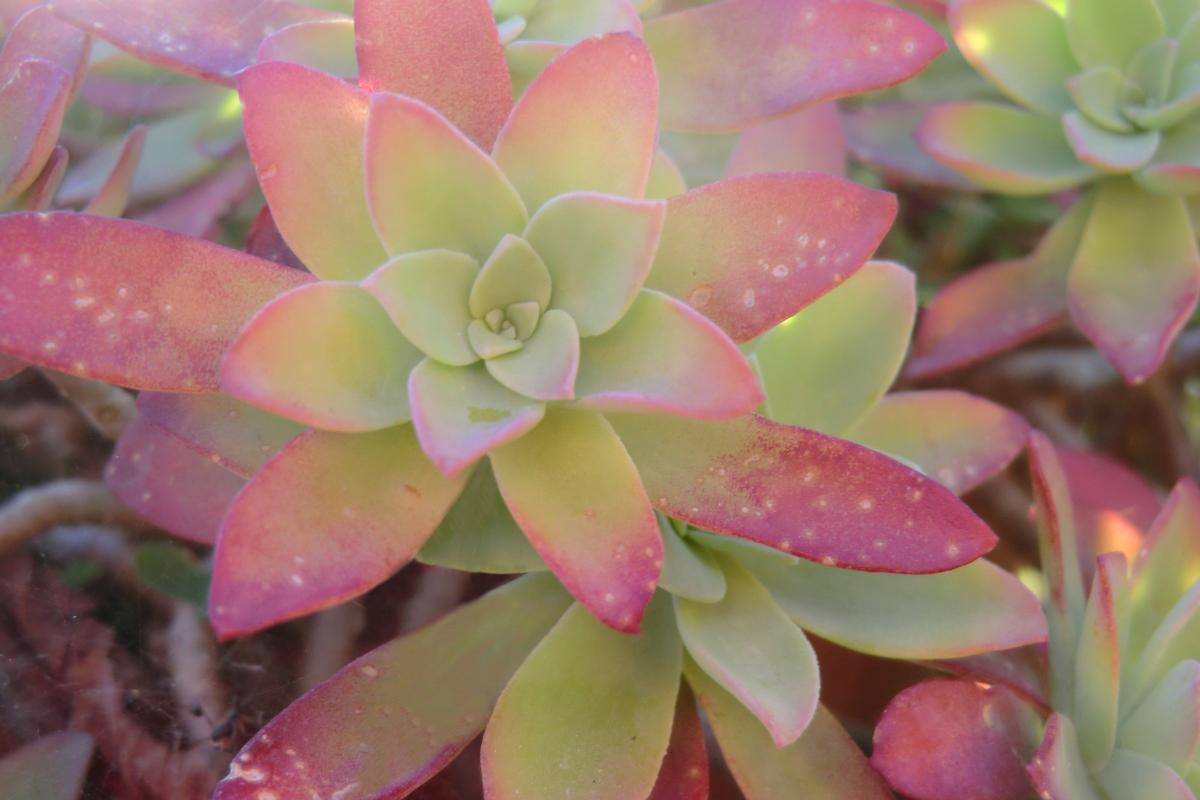Sedum Palmeri or Palmer’s Sedum Care Guide


Palmer's Stonecrop (Sedum palmeri) is a lovely succulent from Mexico that's become a favorite for its looks and how easy it is to care for. Its clusters of spoon-shaped leaves on woody stems, plus those cheerful yellow flowers you get in winter and spring, mean it looks good all year round in gardens and pots. Whether you're new to gardening and want something simple or you're experienced and want to add some interesting texture to your garden, Palmer's Sedum is both pretty and tough.
This guide from thedailyECO provides all the essential information you need to successfully care for your Sedum palmeri, or Palmer's Sedum, and ensure this adaptable succulent stays happy.
Characteristics of Sedum palmeri
Sedum palmeri, commonly known as Palmer's Sedum or Palmer's Stonecrop, has several distinctive features:
- It has water-storing leaves that are fleshy, spoon-shaped and curve slightly inward, arranged in rosettes at the tips of woody stems.
- It grows long, thin woody stems that can reach 30 centimeters (12 inches), branching extensively to form large colonies - a key feature that distinguishes it from similar Echeveria succulents.
- It displays light green foliage that develops attractive pink or red tips as the plant matures, creating a bicolor effect.
- It produces bright yellow, star-shaped blooms that appear in clusters, typically in late winter to early spring.
- It has a creeping growth habit that allows it to spread and form ground cover, with stems that cascade when planted in hanging baskets or wall planters.
- It can form clumps up to 30-45 cm (12-18 inches) wide with multiple rosettes, each measuring about 10-15 cm (4-6 inches) in diameter.
- It resembles miniature palm trees with its long stems acting as trunks and rounded leaf rosettes as crowns, which inspired its species name "palmeri."
- It originated in the rocky mountainous regions of Mexico, making it naturally adapted to arid conditions and rocky soils.
- It is frost-tolerant down to about -7°C (20°F), making it one of the more cold-hardy Sedum species compared to other Mexican varieties.
- It has a particularly long-lasting flowering period that can extend from late winter through early spring (February to April), providing early-season interest when many other plants are still dormant.
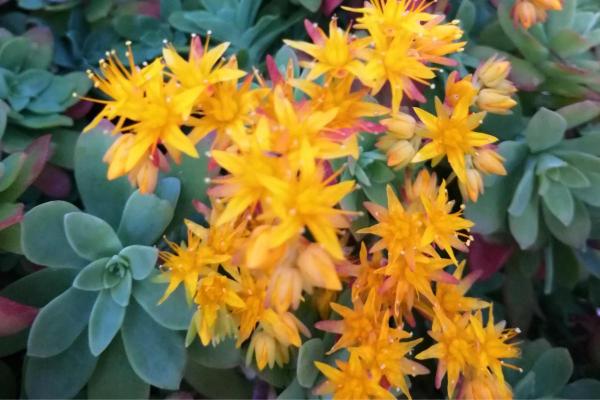
Light, temperature and location
Sedum palmeri has specific needs and strengths that make it easy to grow in different settings:
- It loves Mediterranean-type climates and does best in full sun.
- Its leaves don't burn in strong sunlight, but it can also grow in partial shade if it gets at least four hours of light each day.
- It handles cold much better than most succulents. It can survive temperatures as low as -10°C (14°F), so it works well in places with cold winters. This plant stays alive and visible all year round.
- You can plant Palmer's Sedum in gardens with volcanic rock or other stones, and it will pop up and thrive with ease. It also grows nicely on wooden logs.
- It works great as ground cover for big outdoor spaces, needing very little care once established.
Curious about how Palmer's Sedum fits into the broader world of desert plants? Explore our in-depth guide comparing cacti and succulents to better understand your collection.
Sedum palmeri soil and fertilizer
Choosing the right soil mix is essential for healthy Sedum palmeri plants. While these succulents aren't particularly fussy, they do have specific preferences that help them thrive:
It needs soil designed for succulents or cacti, which you can easily make at home. Mix equal parts peat, worm castings, and a drainage material such as perlite, tepojal, pumice, or volcanic gravel. This mixture provides both nutrients and proper drainage to prevent root rot.
- It doesn't demand special substrate or fertilizer, but you can support it during its growth period by adding a tablespoon of worm humus on top as mulch to replace nutrients the plant has used.
- It performs best when planted in containers or garden areas with drainage holes or excellent natural drainage, as standing water can quickly lead to root problems.
- It can adapt to poor soil conditions as long as drainage is good, reflecting its natural habitat in rocky Mexican mountainsides where soil is often minimal.
- It benefits from a slightly acidic to neutral pH range (6.0-7.0), though it can tolerate slightly alkaline conditions as well.
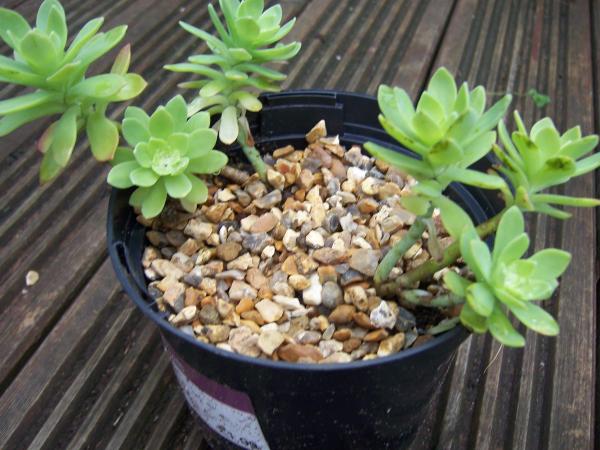
Watering Sedum palmeri
Understanding how to water Sedum palmeri properly is key to keeping these succulents healthy and thriving. Their water-storing abilities mean they have specific watering needs throughout the year:
- It requires minimal watering thanks to its ability to store water in its fleshy leaves, making it an excellent low-maintenance plant for busy gardeners.
- It needs more frequent watering during summer heat and spring growth periods. During these seasons, water only when the soil has completely dried out to avoid root rot problems.
- It should never be overwatered, as excess moisture can cause the roots to rot and the leaves to burst from absorbing too much water.
- It enters a dormant period during fall and winter when its water needs decrease significantly. During these cooler months, watering once every two weeks is typically sufficient.
- It benefits from bottom-watering methods (for potted plants) that allow the roots to absorb moisture without wetting the leaves and rosettes, which can lead to fungal issues.
- It shows visible signs of underwatering through slightly wrinkled leaves, giving gardeners a clear indication when water is needed.
- It recovers quickly from drought conditions once watered, making it forgiving if you occasionally forget to water it.
Did you know many succulents aren't just beautiful but can also be added to your plate? Discover which desert plants can safely enhance your culinary creations in our guide to edible desert plants.
Pruning Sedum palmeri
Palmer's Sedum benefits from strategic pruning to encourage a fuller, bushier growth habit that's more visually appealing in garden settings. The plant responds well when you cut off new branches, as this stimulates it to produce multiple new stems from the pruning points.
Don't discard the cuttings you remove during pruning because these can be easily used to propagate new plants, extending your collection or sharing with other gardeners.
For best results, prune your Sedum palmeri in early spring or after flowering has finished. This timing allows the plant time to recover and produce new growth during the active growing season.
One advantage of this succulent is that it heals quickly from pruning cuts due to its nature, requiring no special treatments or sealants on cut surfaces. You can also shape the plant through selective pruning to maintain a specific size or form, which is especially useful when growing Palmer's Sedum in containers or small garden spaces.
If you notice your plant developing leggy growth, this typically indicates insufficient light. Address this with a combination of pruning the stretched stems and moving the plant to a sunnier location to encourage more compact growth.

Reproduction of Sedum palmeri
Sedum palmeri is propagated asexually through stem cuttings, using a healthy mother plant you already have at home. This method costs nothing extra and produces plants identical to the parent.
To successfully propagate Palmer's Sedum:
- Select a large, healthy plant to serve as your donor.
- Using clean, disinfected tools, cut stems that have leaf rosettes at the tips.
- Allow the cut end to dry and form a callus for about 24 hours. You'll know it's ready when the cut area no longer looks fresh.
- Plant the cutting in properly prepared succulent soil, inserting the stem about three centimeters (1.2 inches) deep.
- Give the newly planted cutting two days to settle before watering. After this initial period, follow the standard watering guidelines for established plants.
Most cuttings root successfully within 2-3 weeks, developing new growth shortly afterward. This propagation method works best when done during the active growing season in spring or early summer when the plant's natural growth hormones are most active.
Palmer's Sedum can also produce offsets or "pups" that can be carefully separated from the mother plant and established as new specimens, offering another easy propagation method for gardeners.
Diseases and pests of Sedum palmeri
Even though Sedum palmeri is generally robust, it can face certain issues that gardeners should monitor. Being aware of potential problems helps you take prompt action when needed:
Root rot is the most common problem for Palmer's Sedum, typically caused by overwatering or poorly draining soil. When roots remain in soggy conditions, fungi develop that destroy the plant tissue. Signs include yellowing, mushy leaves and stems that may eventually turn black. To prevent this, ensure your plant has well-draining soil and allow it to dry completely between waterings.
Several pests may affect your Palmer's Sedum, including scale insects, aphids, weevils, and mealybugs. If kept indoors, the plant might also attract slugs or snails. It's natural and beneficial to tolerate a small number of insects as part of a healthy ecosystem. However, if you notice the pests are weakening your plant, intervention is necessary.
You have several options for pest management. You can remove pests manually, prune affected parts of the plant, or introduce natural predators like ladybugs to control aphid populations. These gentler approaches help maintain the ecological balance while protecting your plant's health.
For severe infestations, neem oil or insecticidal soap can provide effective control while remaining relatively safe for beneficial insects and the environment. Apply these remedies during cooler parts of the day to avoid leaf burn.
If you enjoyed this article, you might also like our guide about incorporating lightweight volcanic stone into your potting mixes for optimal succulent growth.
If you want to read similar articles to Sedum Palmeri or Palmer’s Sedum Care Guide, we recommend you visit our Plant care and cultivation category.
- Font Barris, J. (2022). Cacti and other succulent plants. Spain: Larousse.
- Horvath, B. (2014). The Plant Lover's Guide to Sedums. United States: Timber Press.





